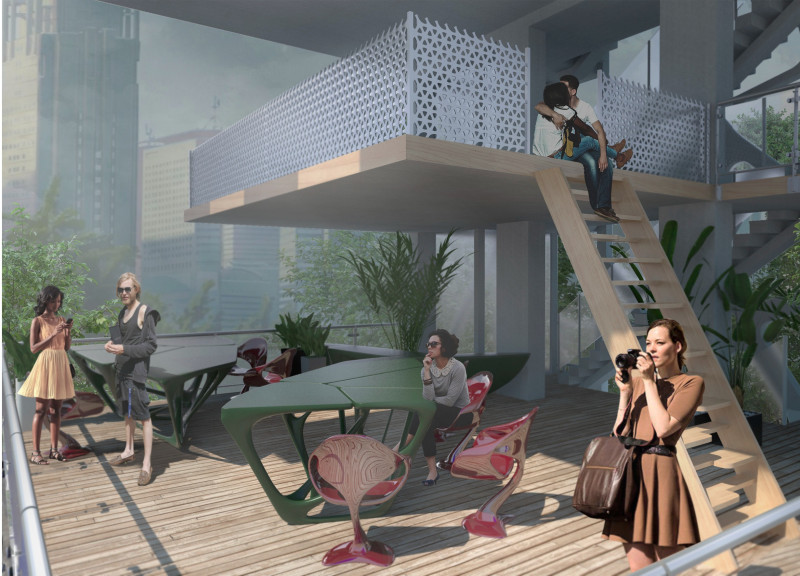5 key facts about this project
Housing modules feature a flexible design, enabling customization by inhabitants. This adaptability stands in contrast to traditional housing models, which are often rigid and standardized. The architectural approach focuses on combining private living spaces with public areas, facilitating a sense of belonging and encouraging social engagement.
Vertical Living Solutions
This project integrates various functional aspects into its design, distinguishing it from conventional residential developments. Each residential level incorporates not only housing but also communal amenities such as gardens, recreational areas, and multi-use zones. These features are designed to support a range of activities, promoting an active lifestyle and a sense of community.
The innovative design is characterized by mobile housing units that can be adjusted or reconfigured as needs change. The incorporation of green spaces, such as vertical gardens and communal parks, provides vital ecological benefits and enhances the aesthetic quality of the environment. This focus on sustainability speaks to a growing demand for environmentally conscious architectural solutions.
Modular and Accessible Design
The architectural design employs a selection of materials, including concrete for structural elements and glass for facades. This choice ensures durability while allowing for natural light to permeate living spaces. The seamless integration of different zones within the structure, aided by intelligent circulation pathways, promotes ease of movement and accessibility.
The project’s modular approach is essential in addressing the dynamic needs of urban residents. By creating an adaptable environment, the design ensures efficiency and practicality in a densely populated area. This focus on user interaction and spatial diversity allows the project to transcend typical high-rise residential developments.
Explore the architectural plans, sections, and design ideas to gain a deeper understanding of this innovative project. Delve into the architectural strategies employed and see how they respond to modern urban living challenges.


























